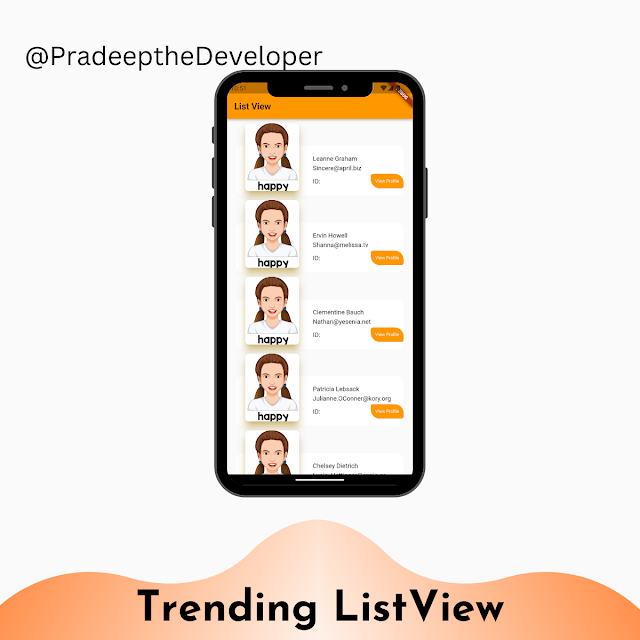A Comprehensive Guide to State Management with Provider in Flutter
State management is a critical aspect of building robust and efficient Flutter applications. One of the most popular and widely used state management solutions in the Flutter community is the Provider package. In this blog, we'll dive deep into Provider and understand how it simplifies state management while optimizing app performance.
1. What is Provider in Flutter?
Provider is a state management package built on top of InheritedWidget and ChangeNotifier in Flutter. It helps manage application state efficiently by allowing the sharing and updating of state between widgets in the widget tree without boilerplate code. By leveraging Provider, you can avoid the complexities of managing state manually and focus on building a responsive and reactive user interface.
2. Why Choose Provider for State Management?
Provider offers several advantages over other state management solutions. It minimizes unnecessary widget rebuilds by only rebuilding widgets that depend on the changed state. Additionally, Provider encourages the use of the Single Responsibility Principle, making it easier to separate concerns and organize code in a scalable manner. Its simplicity and efficiency make Provider an excellent choice for state management in Flutter applications.
3. Getting Started with Provider
We'll take you through the step-by-step process of implementing Provider in your Flutter app. Starting from setting up a `ChangeNotifier` model class to wrapping your app's root widget with `MultiProvider`, we'll show you how to provide and access state throughout the widget tree.
4. Using `Consumer` and `Provider.of`
Learn how to use the `Consumer` widget to efficiently rebuild only specific parts of the widget tree when the state changes. We'll also explore the classic `Provider.of` method to access state directly in widgets, along with optimization techniques to prevent unnecessary rebuilds.
5. Implementing Dependency Injection with Provider
Provider is not limited to just state management; it also serves as a powerful tool for dependency injection. We'll explain how you can provide and access instances of your dependencies using Provider, resulting in a more modular and testable codebase.
6. Optimizing Provider for Performance
To get the best performance out of Provider, we'll share some essential optimization tips. From using `const` widgets to leveraging the `Selector` widget, you'll discover ways to ensure your app runs smoothly even in complex state scenarios.
7. Comparing Provider with Other State Management Solutions
While Provider is a widely adopted package, it's essential to understand its alternatives. We'll compare Provider with other state management solutions like Bloc, Redux, GetX, and Riverpod. This comparison will help you make an informed decision when choosing the best state management approach for your app.
Key Features and Advantages of Provider:
- Efficient State Management: Provider efficiently manages the state of your Flutter application. It only rebuilds the widgets that depend on the changed state, reducing unnecessary widget rebuilds and improving performance.
- Simplicity: Provider follows a straightforward and intuitive API design, making it easy to learn and use. Its simple implementation allows developers to focus on building the UI and functionality of their app without getting bogged down by complex state management code.
- Scoped State: Provider allows you to define different scopes for your state. You can choose to provide state at the root level, specific screens, or even specific widgets. This scoping flexibility helps in structuring your app's state in a clean and organized manner.
- Single Responsibility Principle (SRP): Provider encourages the use of the Single Responsibility Principle. By isolating your state logic into separate model classes that extend ChangeNotifier, you can achieve a clean separation of concerns, leading to maintainable and scalable code.
- Dependency Injection: While primarily known for state management, Provider can also be used for dependency injection. You can provide instances of your dependencies throughout the widget tree, making it easier to access and use these dependencies where needed.
- Interoperability: Provider is designed to work well with other Flutter packages and plugins. Its interoperability allows you to use Provider alongside other solutions for navigation, UI, networking, and more.
- Wide Adoption and Community Support: Provider has gained widespread adoption in the Flutter community. As a result, there are numerous tutorials, articles, and open-source projects available that demonstrate best practices and patterns for using Provider effectively.
Conclusion
By the end of this blog, you'll have a comprehensive understanding of Provider and its capabilities as a powerful state management solution in Flutter. Armed with this knowledge, you'll be able to build scalable and efficient Flutter applications that offer a seamless user experience.
Note: Feel free to expand on each section with code snippets, examples, and best practices to make the blog more informative and engaging for your readers.



Comments
Post a Comment